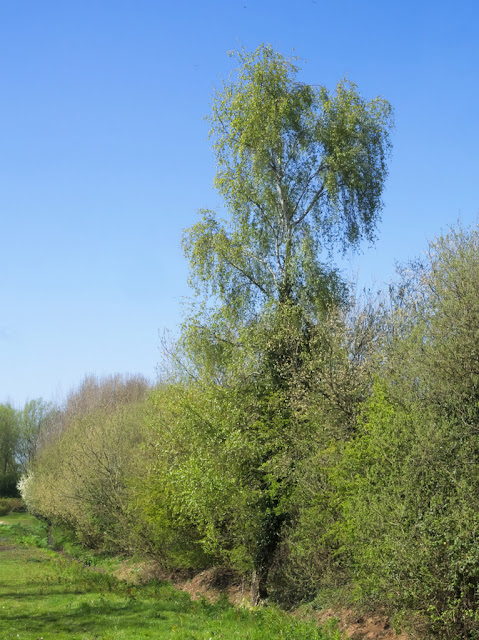The real voyage of discovery consists not in seeking new landscapes, but in having new eyes
Marcel Proust
Proust's
thought lies at the very heart of my project. It runs through my work
like 'Blackpool' in a stick of rock. For whatever else, I am on a
journey of discovery taking fresh eyes to a very familiar landscape. It
is a journey filled with pleasure, as there is always a great sense of
satisfaction in finding something new in ones own backyard.
But
what does it actually mean to 'have new eyes'? What practical steps
should I take to see the world, or at least Milton Country Park, in a
way I have never seen it before?
 | ||
| South Side of Dickerson's Pit 23 April 2015 |
One school of thought proposes that I need that I need to shed all preconceptions about the world and look at it as a child. I find this advice impossible to follow. I cannot by conscious effort forget everything I remember, or unlearn everything I have learnt. However hard I try, when I see a tree like the one shown above, I see a tree complete with a lifetimes worth of associations. I will name that tree and with the name will come ideas on the shape of the tree and its leaves, the insect life that may live on it, and the birds that may nest in it. Involuntarily, my view of the tree will be affected by great paintings or photographs I have seen of trees. Can I ever look at a conifer and not think of Vincent Van Gogh? Or more up to date, having seen Hockney's masterpieces, can I ever look at a tree the same again?
But
I do not think that preconceptions are the problem in making images of
our own neighbourhood. I think of far more relevance is that unless
something changes, any familiar environment simply does not register on
the brain. How many times have you walked around your local streets to
find some building has been demolished, and realise that for the life of
you, you cannot remember what was there before? It is the proverbial
'part of the furniture'.
 |
| Path West of Todd's Pit 15 May 2015 |
In my case, it means I have got to see Milton Country Park beyond tree lined paths around water filled gravel pits. It is symptomatic of my inattention to my surroundings that before I started I wanted to reassure myself that I had enough material to maintain this blog. To that end, I listed all the things I thought worth photographing in the park. This initial list had just twelve items. What is perhaps even more pertinent, that the twelve items on the list were things I had photographed in the past. If I hadn't photographed it, either I hadn't noticed it, or had forgotten it.
I remembered the yellow irises but not the ground ivy; the purple loosestrife (now gone) but not the comfrey; the hawthorn but not the horse chestnut. I have never before noticed the green alkanet, yet the amount of this plant in the park suggests it has been there for some years. I took interest in the bridges, but not the tree lined paths, which all look just the same, and are devoid of any interest!
 | ||||
| Green Alkanet By Childrens' Play Area 30 April 2015 |
So far as this project is concerned, first and foremost, I simply need to really look at what is there. I need to use my camera as Dorothea Lange implied when she said: ' a camera is a tool for learning how to see without a camera'.
It is precisely this that I have been doing very productively for the last five months. The bush shown above is a good illustration: not only have I not seen the bush before, I had never walked that particular path before. I am finding that the more I look the more I find. I have a 'shooting list' a lot longer than 12 items, with whole areas, like the wetlands, or Tomkins Mead still to explore in any detail.
It
is one of my fundamental aims to show that the 'ordinary' English
countryside, as typified by Milton Country Park, contains a great deal
of interest and beauty for those prepared to look.
NEXT: TREES FROM TIP TO TOE


No comments:
Post a Comment